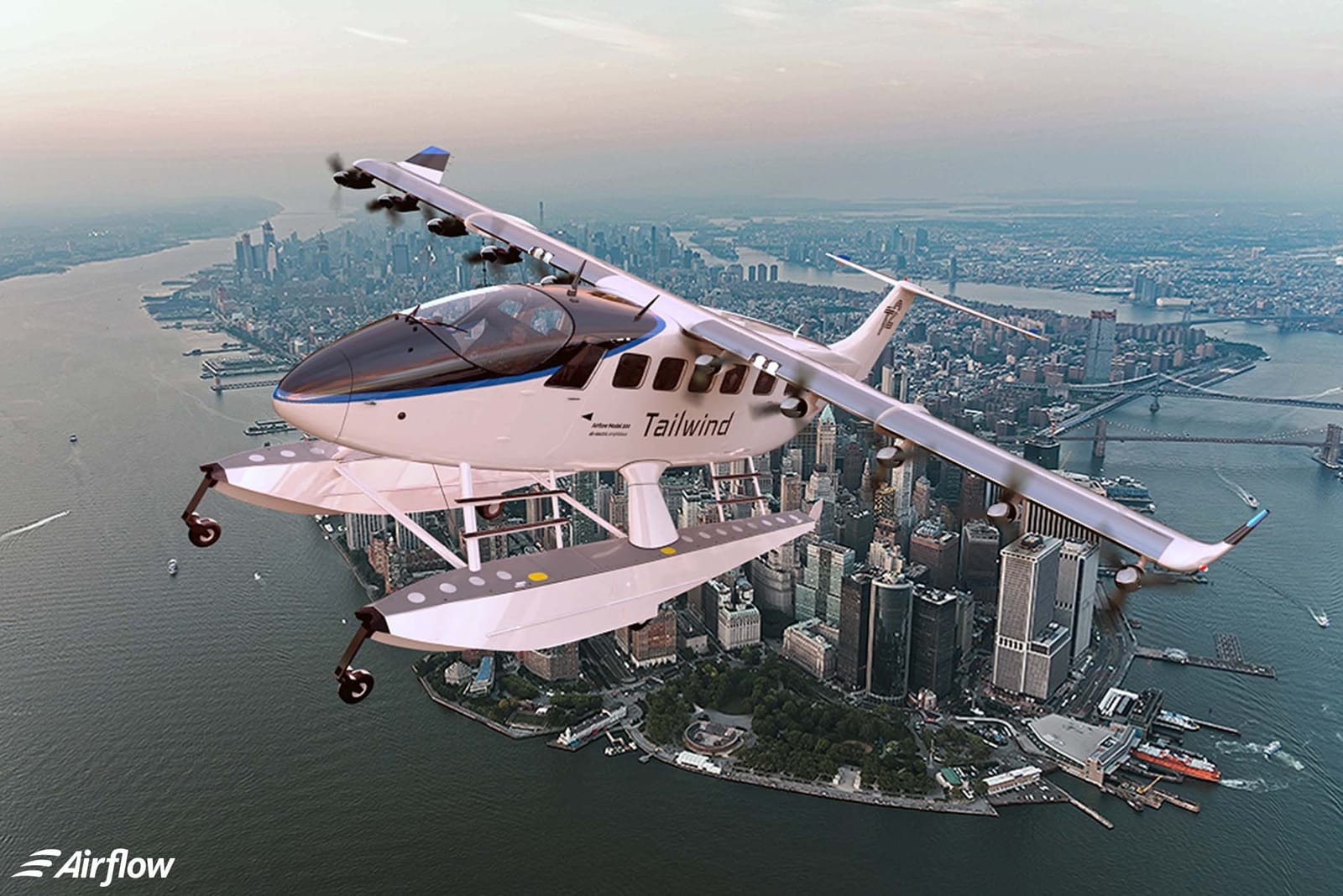Click Here to View This Page on Production Frontend
Click Here to Export Node Content
Click Here to View Printer-Friendly Version (Raw Backend)
Note: front-end display has links to styled print versions.
Content Node ID: 419348
Cessna Caravan seaplane operator Tailwind Air has signed a letter of interest (LOI) to acquire 20 Airflow Model 200 eSTOL aircraft, making it the hybrid-electric-powered aircraft’s launch customer for the Mid-Atlantic and New England region. Pioneering New York to Boston Harbor scheduled seaplane service this year, the Part 135 commuter carrier also manages and charters a fleet of land aircraft ranging from large jets to regional turboprops.
“We actively sought out a partner that could accelerate the timeline of electric aviation’s impact in our particular segment of the market,” said Tailwind CEO Alan Ram. “With its combination of distributed electric propulsion and a modern airframe that still uses traditional construction, flight controls, and the like, the Airflow aircraft has a definable development timeline and a clear path to certification. There’s a lot of exciting innovation happening in aviation, but not all of it will deliver a meaningful impact in the coming decade; we think this will.”
Airflow is working on two versions of its proposed aircraft, both of which would allow for single-pilot operation. One version would carry eight to 10 passenger seats and a 2,000-pound payload while offering a 500-mile range and the ability to land and take off from just 200 feet of runway. A smaller model would carry a 500-pound payload, fly as far as 250 miles, and operate from runways as short as 150 feet.
Last month, Airflow announced that electric aircraft manufacturer Pipistrel would supply the M200's electric motors, controllers, and batteries for the proof-of-concept model with which it intends to begin test flights in 2022. Airflow will still continue to work with VerdeGo Aero on a hybrid-electric powertrain for the fixed-wing aircraft. The combined propulsion system would deliver a 35 percent reduction in carbon dioxide emissions compared with conventional turbine engines.
Earlier this year, the company flight-tested a subscale model to develop flight-control technology. Having completed more than 200 flights with the model, the engineering team has begun working on an autopilot system. It intends to use a Cessna 210 piston aircraft as a technology demonstrator.
“The flexibility that our aircraft provides is a way for existing operators like Tailwind Air to gain a competitive advantage, reduce emissions, and offer new services,” said Airflow CEO and cofounder Marc Ausman. “They will now be at the leading edge of sustainable flight, and we’ll be able to further refine our aircraft design for today’s operations and tomorrow’s as well. Over the last year, we’ve seen strong demand for our aircraft, especially an amphibious seaplane version. Our design lends itself well to the addition of floats and a partner like Tailwind to bring this to market is a win for the entire regional air mobility market.”
